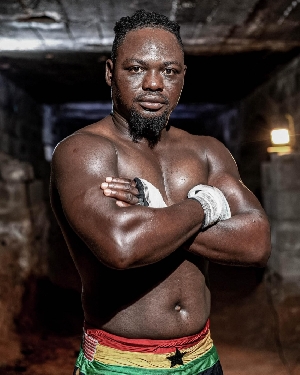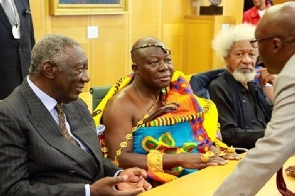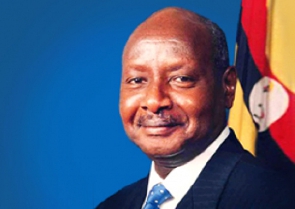- Home - Entertainment
- Lifestyle News
- Entertainment Videos | TV
- Year In Review
- Music News
- Entertainers
- Entertainment Archive
- Entertainment Photos
- Jokes
- Entertainment Headlines
- Ameyaw Debrah
- Brown GH
- Celebrities Buzz
- GH Base
- Ghana Celebrities
- Gh Gossip
- GH Page
- GH Splash
- Hot Gossip GH
- YEN

Music of Sunday, 27 July 2003
Source: ghanamusic.com
The Origins of High Life in Ghana
Featuring different forms of popular music such as palm wine music, church choirs, singing bands, swinging dance bands and also art music, "Ghana Popular Music 1931-1957" documents the roots of the modern dance music of Ghana, which came to world wide fame under the name of Highlife.
The West African coast has for centuries been a melting pot, where music stiles and practices from various origins met. For example the Kru sailors of Liberia used to travel the whole of the West African coast right down to the Congo both in their own canoes and as hired crew on European and American trading vessels. They transported instruments and stiles, such as the guitar and the concertina, the shanty tradition and guitar riffs, which met with the local rythms and stiles. Both guitar and concertina spread into the rural areas in the form of the so called palm wine music. Often it was a trio consisting of guitar, percussion (box drum and clips) and vocals that performed at venues where palm wine or its distilled form the cheap Akpeteshi were sold and also offered for the musician's motivation.
A rapidly growing migrating labour force shaped and transported also new forms of popular dances like the Ashiko or Osibisaba. These spread like wildfire across southern Ghana at the end of the 19th century and much to the dislike of missionaries and churches attracted huge crowds. But mission churches themselves with their chorals and teachings had a huge influence on the shaping of Highlife.
Church choirs with their slow dragging hymns and the more popular church singing bands were very mobile within the network of churches. Singing bands increasingly developed a live of their own, independent of the churches but rather tied to a specific town or conductor. The songs as well were no more exclusively religious in content.
A further influence were the regimental brass bands of the colonial military forces which became a major attraction. And with time at many places rich and influential Africans would set up a band of their own, through it displaying their wealth and influence. Churches as well could have a brass band of their own.
Palm wine trios often developed into larger guitar bands and even performed popular theatre. In the so called concert parties the musicians performed also as actors, the show and concert lasting the whole of the night.
Finally there were the dance orchestras which played for an upper class audience in the ball rooms of the southern Gold Coast. More and more they fused the western stiles like Cha Cha Cha, Foxtrott, Waltz, Calypso and Rumba with the local rhythmic patterns. Had it first been a music for the elites only (thus the name High-life), dance band Highlife developed into a national music in the years of the independence when E.T. Mensah and his bands performed at the party rallies of Kwame Nkrumah. Their international tours brought Highlife to international fame and the recording industry helped in spreading it further.










